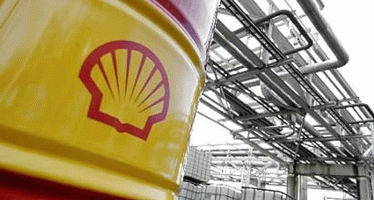New World Bank Initiative to Help End Wasteful Energy Subsidies
- A new World Bank-ESMAP facility helps countries develop and implement effective, sustainable energy subsidy reform programs that protect the poor from the impact of higher energy prices.
- Such subsidies primarily benefit higher-income earners rather than the poor, but if subsidies are lifted suddenly, the poor can be hit hard.
- Energy subsidies are creating huge budget pressures for governments and raise energy consumption, contributing to pollution and greenhouse gas emissions.

Petrol tanker driving along the rural road, Russia Gennadiy Kolodkin / World Bank
Countries around the world are finding that energy subsidies pose a threat to their economic, environmental and fiscal health. Despite originally being designed to help the poor and middle class, in most cases the benefits of energy subsidies have largely gone to higher income earners.
“Subsidized prices for fuel and electricity may have been put in place with the best of intentions, but in general the net effect has been to undermine sustainable growth and shared prosperity,” said Anita Marangoly George, senior director of the World Bank’sEnergy and Extractives Global Practice.
However, such subsidies, once in place, are very difficult to remove. Powerful vested interests grow around subsidies, and the poor, while not the primary beneficiary of these programs, can be seriously affected if energy prices rise too quickly. Worldwide energy consumption subsidies were estimated at $492 billion in 2011, the equivalent of 0.7 percent of global GDP, or over 2 percent of total government revenues.
“We have to take into account the long-term impact of fuel price adjustments, since we know that the poor and near-poor will cut health and education spending as a coping mechanism. We also need to make the distinction between ‘painkillers’ – short-term cash handouts – and ‘vitamins’ – long-term social safety nets.”
– Mohamad Ikhsan, Professor, University of Indonesia
A new World Bank facility is now available to help countries reform their energy subsidies and put in place social protection measures to help the poor during this transition. The Energy Subsidy Reform Technical Assistance and Delivery Facility, led by the Bank’s Energy Sector Management Assistance Program (ESMAP), is already supporting World Bank engagements in a number of regions.
The facility was announced at a knowledge exchange conference held in Copenhagen on October 22, 2014. The event, organized by ESMAP, brought together senior representatives from 25 countries to look at what has worked to date – and what has not – as countries attempt to remove harmful energy subsidies. The event was co-hosted by Denmark’s Ministry of Foreign Affairs and opened by Foreign Minister Martin Lidegaard.
Presentations at the conference made it clear that there is a sense of urgency among countries to reverse course on energy subsidies, in part because of the huge fiscal pressures they can create. In some cases governments are spending more than a fifth of their annual budgets to keep fuel and electricity prices at artificially low levels. There is also increasing concern about the overconsumption of fossil fuels due to subsidies and their associated contribution to pollution and greenhouse gas emissions.
“Governments are ready to take action, but reform is difficult and complex,” said Anita Marangoly George, speaking at the conference. “It’s important to take into account economics, as well as timing, social structure, and the political environment.”
Speakers emphasized the importance of taking the right approach to protecting the poor as subsidies are lifted, and ensuring that compensation is handled correctly.
“We have to take into account the long-term impact of fuel price adjustments, since we know that the poor and near-poor will cut health and education spending as a coping mechanism,” said Professor Mohamad Ikhsan of the University of Indonesia. “We also need to make the distinction between ‘painkillers’ – short-term cash handouts – and ‘vitamins’ – long-term social safety nets.”
Another session at the conference focused on public communications and how best to build consensus towards reforms. Participants agreed that government credibility, coordination and clearly articulated rationales for reform are essential ingredients for success.
Other topics covered at the conference included managing price fluctuations, independent regulation of energy pricing, and how best to manage political challenges. Among the country experiences presented at the conference were those of Chile, Indonesia, Iran, Kenya and the Philippines.
The $20 million ESMAP energy subsidy reform facility will support a wide range of activities to help countries ensure that reform efforts are successful and sustainable. These include:
- assessments of the social, economic, environmental and political impact of subsidies, and of reforms;
- support for consensus building through policy dialogue, consultations and communications strategies;
- design of subsidy reform approaches, transition plans, subsidy delivery mechanisms, and social protection measures; and
- support to governments throughout the process of implementation.
Work under the facility has been ongoing at the country level for over a year in the Middle East, East Asia, Central Asia and Latin America and the Caribbean.
In Tajikistan, the facility supported an assessment of how energy deprivation is affecting households, taking a broad look at energy security, affordability and coping mechanisms across different populations in the country. As part of this, it also explored the conditions under which an electricity tariff increase would be acceptable for consumers, and what measures could be put in place to cushion the impact of rising energy expenditure for the poor and vulnerable. In Vietnam, the facility supported work to assess how low carbon development scenarios would impact costs of electricity and the need for future price changes to avoid subsidies.
In addition to supporting country action on subsidy reform, the facility also supports knowledge exchange, encouraging peer learning among client countries on reform approaches, pricing strategies, communications and consensus building, and mitigation measures such as social protection mechanisms.
You may have an interest in also reading…
Mitigating AI Gender Bias Risks in the Workplace
AI is transforming the workplace, providing unparalleled opportunities for efficiency. However, like any powerful tool, AI also presents its own
More Phones Than People in Brazil
With the privatization in 1998, Brazil stopped being a country where the telephone was a privilege for the few. With
Shell: Reduced Crude Oil Theft
Shell’s Nigerian unit says crude oil theft from its facilities in the Niger Delta is reducing, a development he attributed



















































































